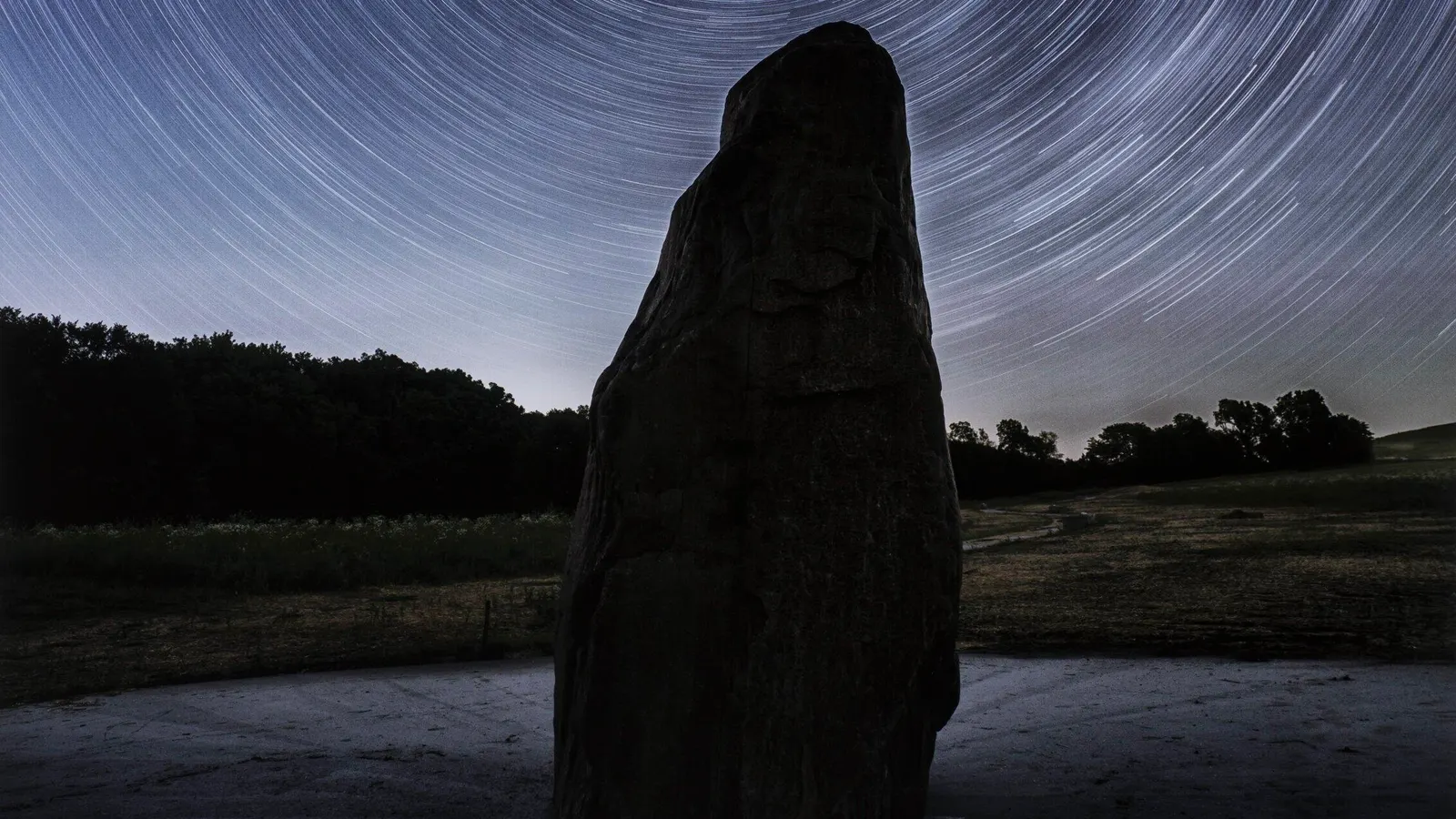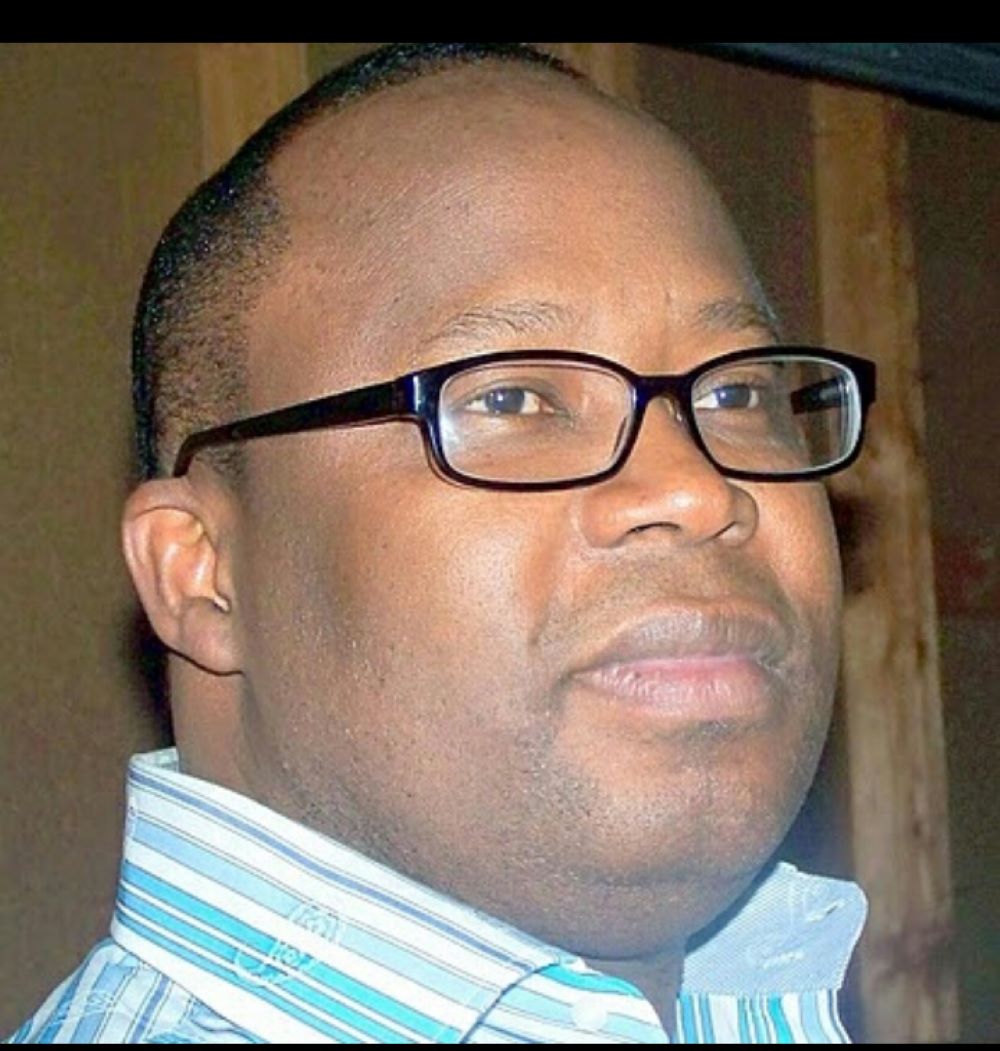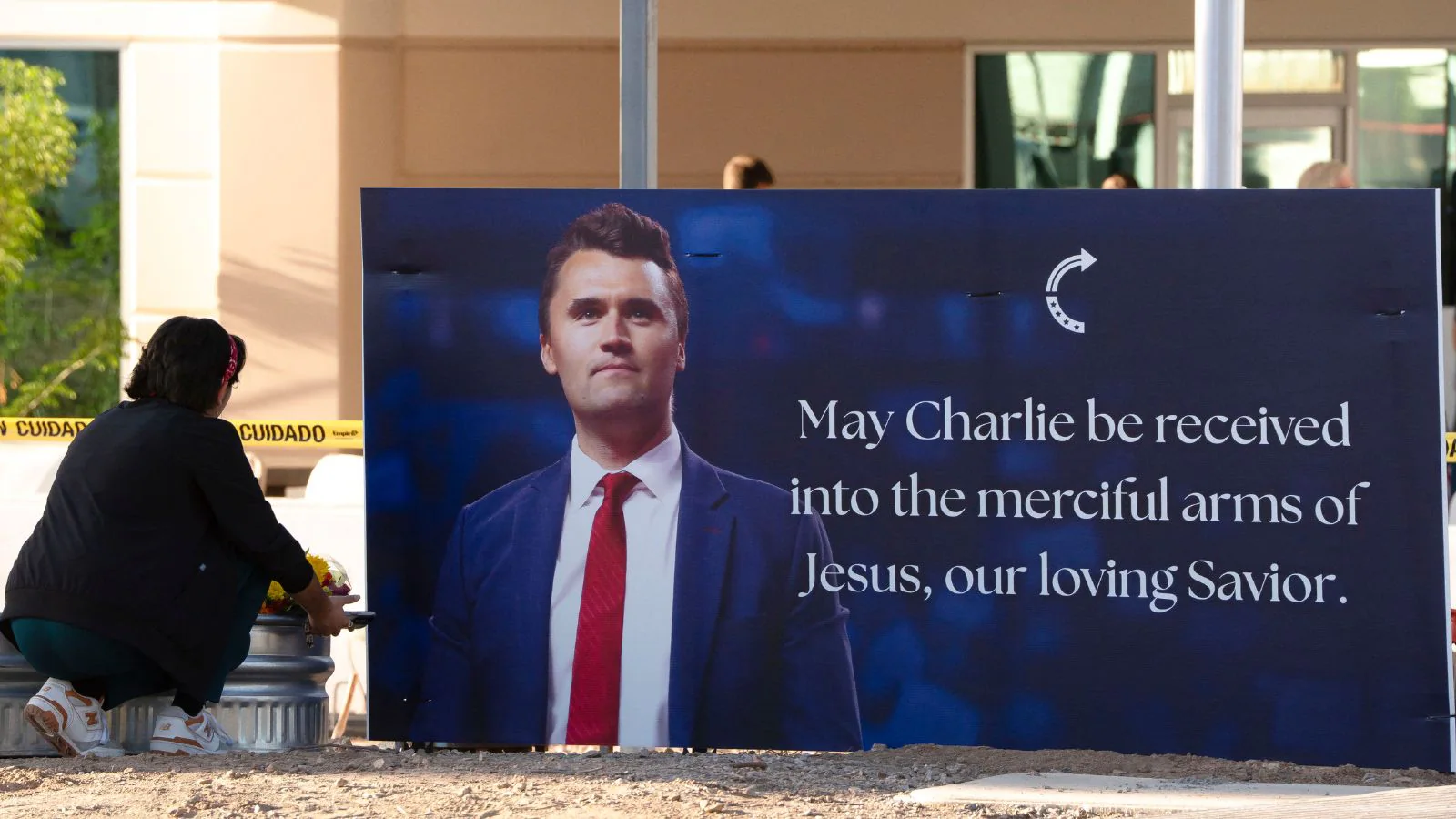By Chadd Scott,Contributor
Copyright forbes

James Pepper Henry, ‘Iⁿ’zhúje‘waxóbe & Stars,’ 2024, T2025.046.
James Pepper Henry and the Spencer Museum of Art
A relative.
Grandfather.
Iⁿ‘zhúje‘waxóbe.
In the Kanza language of Kaw Nation–the people of the South wind–“iⁿ” means stone, “zhúje,” the color red, and “waxóbe,” a more complicated translation speaking to the sacred.
Iⁿ‘zhúje‘waxóbe found his way–the rock is referred to by the Kanza with he/him pronouns–to the confluence of the Kaw (Kansas) River and Shunganunga Creek near Tecumseh, KS in northeastern part of the state having been pushed there by a glacier during the last Ice Age. Red quartzite boulders from present-day South Dakota, Minnesota, and Iowa were deposited across the region.
After the ice melted some 600,000 years ago, the 28-ton red Siouxan quartzite boulder stood more than 10 feet above the water. This is how the Kanza found him.
In the 1400s, with an expanding population in present-day southern Indiana and the lower Ohio River Valley, the Kanza people migrated west of the Mississippi River, establishing communities along the Missouri River, along the Kaw River. These waterways and the Rock became an essential part of spiritual and communal rituals and gatherings.
“(Iⁿ‘zhúje‘waxóbe) was a landmark location where they would go to have ceremonies, do their dances, and pray together when Kaw people settled in the area,” Sydney Pursel, the Spencer Museum of Art at the University of Kansas Curator for Public Practice, told Forbes.com. “They settled along the rivers in various village sites and those villages would gather together to perform these ceremonies and pray. While they’re not praying to the Rock, it was a landmark location that they all knew; that was the site where they would have their gatherings. It became sacred to them, and they viewed the Rock as one of their relatives. They asked the creator for the attributes that the Stone has, the strength that the Rock had, the endurance that this Rock has. Red quartzite is one of the oldest and strongest rocks we have on this planet.”
The University of Kansas is in Lawrence.
The Rock became important to the settler/founders of Lawrence as well.
In 1873, having already been dispossessed of most of their former 20,000,000 acre homeland in Kansas, the U.S. government removed the Kanza from their land entirely, “removed” being a benign a term for a “leave or else” warning given from behind the barrel of a cannon. The Kanza were sent to Indian Territory in present day Oklahoma. They were separated from the Sacred Red Rock. Grandfather.
Adding insult to injury, in 1929, Iⁿ‘zhúje‘waxóbe was abducted and moved to Lawrence’s Robinson Park, incorporated into a monument and smothered with a plaque “honoring” the town’s settlers.
The story began moving in the other direction when Kaw Nation citizen James Pepper Henry visited the Sacred Red Rock in the 1990s, vowing one day bring the Stone home to the Kanza people.
“They not only have cleansed us from the land, they’ve taken the things that are most important to us, the most sacred to us, and they’re trying to erase that as well, and that’s a way for them to try and erase their guilt for what they’ve done,” Pepper Henry, Vice Chair of Kaw Nation, said during the filming of a documentary about Iⁿ‘zhúje‘waxóbe’s removal to Lawrence and eventual return to Kaw Nation.
Don’t worry. This story has a happy ending.
It takes over 20 years to get there, however.
Over time, the Rock–the monument–became mostly invisible. Pursel (enrolled member of the Iowa Tribe of Kansas and Nebraska), who attended graduate school at KU and concerts in Lawrence growing up in Kansas City before taking her current position at the University, drove past the site countless times, unaware of Iⁿ‘zhúje‘waxóbe or his significance. The Rock lived in what she described as a glorified traffic circle, a pocket park surrounded on three sides by roads and another by a river.
Efforts to return the Rock picked up steam in 2015 when local artist Dave Loewenstein was conducting research for the Kansas People’s History Poster Project and became engaged with Iⁿ‘zhúje‘waxóbe in Robinson Park. He contacted the Kaw Nation Cultural Committee and they got to work.
Dave Loewenstein, ‘We Implore, 2016.’ Gift of Dave Loewenstein, 2025.0088
Spencer Museum of Art
Making a long story short, in March 2021, the Lawrence City Commission adopted City/County Resolution No. 7358 issuing a formal apology to the people of the Kaw Nation for the appropriation of the Sacred Red Rock as a monument honoring white settlers and agreeing to its unconditional return. One year later, the University of Kansas, in collaboration with Kaw Nation and the City of Lawrence, secured a $5,000,000, multi-year grant from the Mellon Foundation to oversee the Rock’s return to Kaw Nation.
In the summer of 2024, hundreds of people gathered in Allegawaho Memorial Heritage Park in Council Grove, KS–about 80 miles southwest of Lawrence–a park owned by Kaw Nation that includes one of the three Kaw villages where Kanza people resided from the 1840s to 1872. They were there for a Rematriation Celebration to commemorate the return of Iⁿ‘zhúje‘waxóbe to its people and the Rock’s new home in the Park. The original location where the Rock had been deposited by glaciers is privately owned and inaccessible.
“The moment the Rock was lifted up off of the base was something to behold,” Pursel remembers. “You could feel all the Kaw people that were present; you could feel their energy.”
Even more powerful than that was when Iⁿ‘zhúje‘waxóbe was freed of the plaque listing the founders of Lawrence a couple days prior.
“That was the moment where you could feel like the Rock could breathe again,” Pursel explained.
“It’s very important for us to reclaim the things that are sacred to us, that are important to us, culturally and historically,” Pepper Henry said in the documentary. “If we don’t have our history and we don’t have our culture and our cultural life ways, and we don’t have our language, then we cease to exist as Kaw people.”
‘Return of the Sacred Red Rock’
On September 9, 2025, just over a year after Iⁿ‘zhúje‘waxóbe was repatriated to Mother Earth on Kaw Nation land, the Spencer Museum of Art opened “Iⁿ‘zhúje‘waxóbe: Return of the Sacred Red Rock.” The exhibition recalls the struggles and triumphs of this history through documentation, individual reflection, and artworks, including by important figures in this contemporary process like Henry and Loewenstein. Through a range of watercolors, drawings, photographs, and other works, the exhibition captures the significance of the Sacred Red Rock and deep meaning of the Rock’s return to the Kaw Nation. Together, the works and materials in the exhibition reveal important historical narratives and their ongoing contemporary relevance.
Several videos will also be shown in the gallery. One documents the years-long movement to return the rock to the control of the Kaw Nation. Another features audio of Kaw elder Curtis Kehkahbah recounting the rock’s history, set to video of its relocation.
Pursel curated the presentation alongside an advisory committee of Kaw Nation citizens. It is part of a broader series of interrelated projects including the creation of the documentary film, “Return of the Sacred Red Rock,” and the release of a book titled “ShokÍ: How Iⁿ‘zhúje‘waxóbe Returns Home and the Rematriation of a Stolen Monument” due out in 2026 from University Press of Kansas.
The exhibition will remain on view through January 25, 2026.
Chris Pappan, ‘The Sacred in Motion,’ 2024. Museum purchase: Peter T. Bohan Art Acquisition Fund, 2024.0137
Spencer Museum of Art
Returning To The Rock
Every June, Kaw tribal people return to Council Grove for a two-day powwow. They dance the way their elders danced and engage with the Rock the way their ancestors did. He’s once again a gathering place for Kanza people. The people who gave what is now called Kansas its name.
Grandfather is back.
Just like Pepper Henry promised.
“The return of Iⁿ‘zhúje‘waxóbe means a few things,” he explains in the documentary. “One, it means that we’re reclaiming the things that are sacred to us, we’re reclaiming our heritage, but it also means that we have greater responsibility now. I think the stone in return will care for us if we have that relationship with the stone.”
More From Forbes
ForbesHusband And Wife Diego And Cara Romero Highlighted In Traveling ExhibitionBy Chadd ScottForbesAfter 103 Years, SWAIA Santa Fe Indian Market Still Full Of SurprisesBy Chadd ScottForbesLegendary Linda Lomahaftewa At Fresno Art MuseumBy Chadd Scott
Editorial StandardsReprints & Permissions



